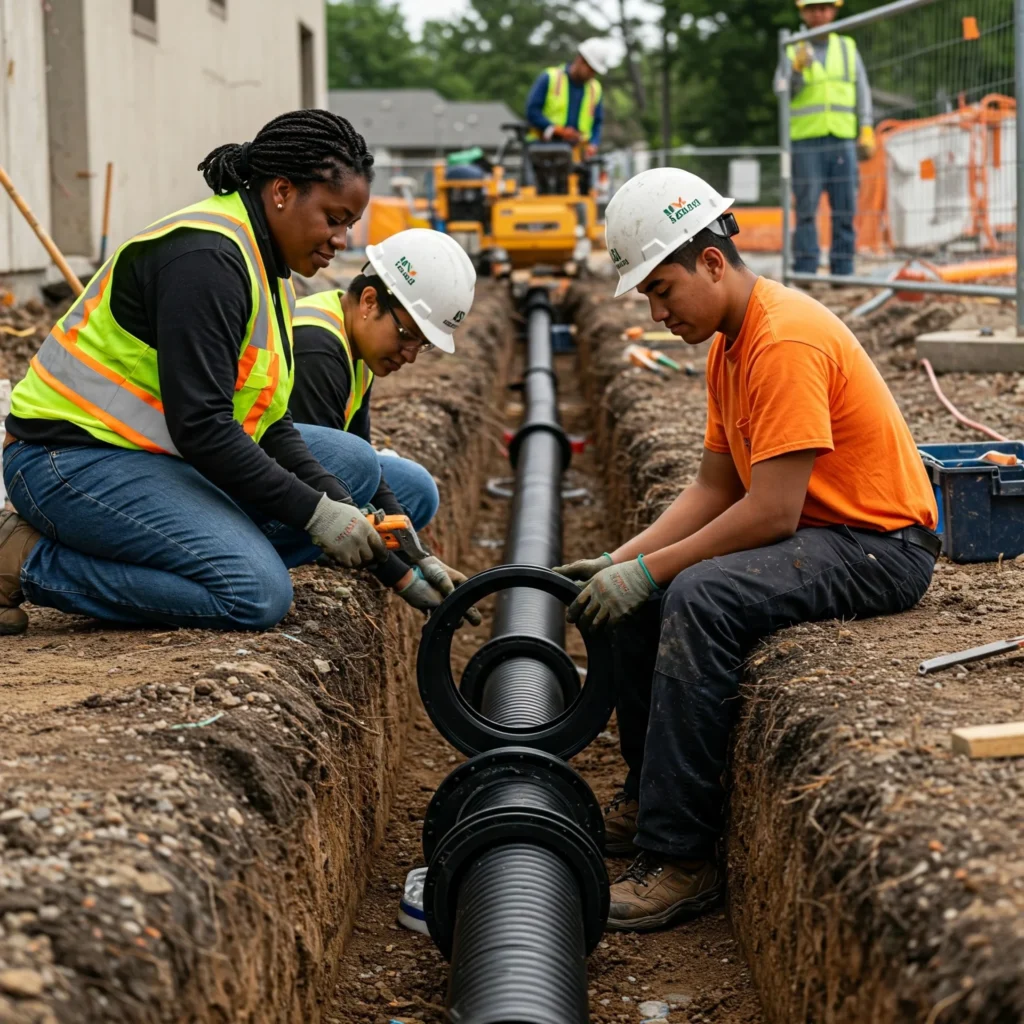Drainage Systems
Get Free Estimate
Water management is one of the most critical aspects of maintaining the integrity and safety of any property. A proper drainage system is key to protecting homes, commercial spaces, and landscapes from water damage. Without effective drainage, excess water can cause serious problems like flooding, soil erosion, and damage to foundations. At R.L.NELSON Foundation Solutions, we specialize in drainage solutions that help you manage water effectively, keeping your property safe and your foundation strong.
We’ll walk you through everything you need to know about drainage systems—what they are, why they matter, the different types available, and how they are installed. Whether you are dealing with a flooded yard, a leaky basement, or are simply planning new construction, understanding how drainage systems work is crucial.
What is a Drainage System?
A drainage system is a network designed to collect, transport, and dispose of excess water. It can handle rainfall, surface water, or even underground water that threatens the stability of your home or property. At R.L.NELSON Foundation Solutions, we focus on providing tailored drainage systems that manage water efficiently to prevent any long-term damage.
Why is a Drainage System Important?
A well-designed drainage system offers several essential benefits:
Types of Drainage Systems
At R.L.NELSON Foundation Solutions, we offer a range of drainage solutions, depending on the needs of your property. Drainage systems generally fall into two categories: surface drainage and subsurface drainage. Understanding which system suits your property best is key to preventing water issues.
1. Surface Drainage Systems
Surface drainage is designed to remove water from the surface of the ground. These systems are typically used for large areas like lawns, driveways, and parking lots.
2. Subsurface Drainage Systems
Subsurface drainage systems, also known as underground drains, work below the surface to remove excess water. These systems are ideal for properties with high water tables or persistent issues with groundwater.

How to Design and Install a Drainage System
Designing and installing a drainage system requires careful planning and attention to detail. Each property is unique, and understanding its water flow patterns, soil type, and landscape is critical to getting the drainage system right. Here’s an overview of the installation process:
Step 1: Site Assessment
The first step is to thoroughly assess your property. R.L.NELSON Foundation Solutions technicians will evaluate your land’s slope, inspect areas where water pools, and consider the building’s foundation. Our goal is to identify the best way to manage water on your property and determine the type of drainage system that will be most effective.
Step 2: System Design
Once the assessment is complete, the design phase begins. This involves selecting the right system whether it’s surface or subsurface and planning out its components, such as gutters, downspouts, and drains. We’ll take into account the property’s elevation, any existing structures, and your specific needs.
Step 3: Excavation and Installation
After finalizing the design, the installation phase begins with excavation. Trenches are dug for French drains, swales, or subsurface pipes. During this phase, R.L.NELSON Foundation Solutions takes care to avoid damaging existing landscaping or structures.
Step 4: Testing and Final Adjustments
Before we cover the trenches or complete the project, we test the system to ensure everything works properly. We’ll check for any blockages, make sure water flows away from the foundation, and confirm that the system is draining efficiently.
Common Drainage Issues and How to Prevent Them
Even a well-installed drainage system requires regular maintenance to remain functional. Here are some common problems homeowners may encounter and how R.L.NELSON Foundation Solutions can help prevent them:
Maintenance of Drainage Systems
Maintaining your drainage system is essential to keeping it in top working condition. At R.L.NELSON Foundation Solutions, we recommend the following routine checks:
Expert Foundation Drainage Solutions in Your Area
We proudly serve homeowners in Houston, Sugar Land, and Spring, Texas, and the surrounding areas, providing reliable and effective foundation drainage solutions. Our team understands the unique challenges of local soil conditions and weather, ensuring that your home stays protected from water damage. With years of experience and a dedication to quality, we’re the trusted choice for keeping foundations safe and dry.
Get a Free Consultation from Local Drainage Experts
Don’t let water damage ruin your home’s foundation! At R.L. NELSON Foundation Solutions, our foundation drainage installation specialists keep your home safe and dry. From new system installation to worries about your current drainage, our local specialists can help. We offer free consultations and customized solutions to address your individual needs. Call us today and let’s take water management stress off your to-do list!
